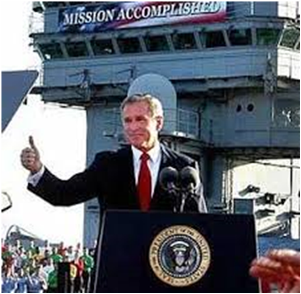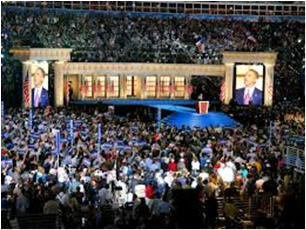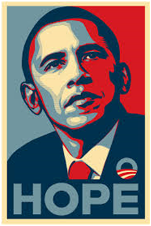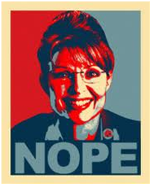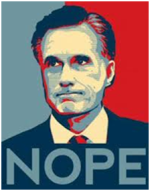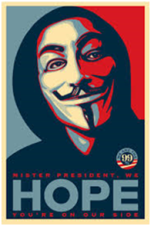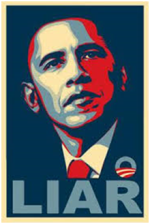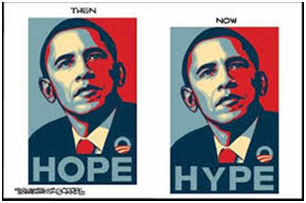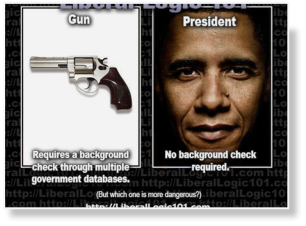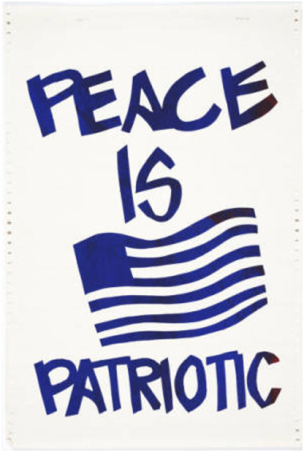Performing Politics
Skip other details (including permanent urls, DOI, citation information): This work is licensed under a Creative Commons Attribution-NonCommercial-NoDerivatives 3.0 License. Please contact mpub-help@umich.edu to use this work in a way not covered by the license.
For more information, read Michigan Publishing's access and usage policy.
Abstract
Walter Benjamin’s observation that fascism turns politics into aesthetics is, by now, a well-worn idea. This article argues that Benjamin’s critique of politics can apply just as much to the modern democratic politics of the United States. Borrowing from Benjamin, Jürgen Habermas, and Carl Schmitt, this article suggests that modern political discourse in the United States does not follow the classical liberal ideal of rational discourse in the marketplace of ideas within the public sphere. Instead, contemporary politics has become spectacle where images and slogans replace thought and debate in a 24/7 news cycle and political infotainment programs. The result is that progressives and conservatives have their own political "ecospheres" which enable them to have their own perspective reinforced, and debate is replaced by straw man arguments and personal attacks.
Key Words
aesthetics, Walter Benjamin, debate, ecosphere, Jürgen Habermas, meme, politics, public sphere, Carl Schmitt
As a German historian, it is appropriate that I begin this article with three German propositions:
Proposition #1. The public sphere is a place where private individuals can challenge public (meaning "state") actions. Jürgen Habermas
Proposition #2. "The specific political distinction to which political actions and motives can be reduced is that between Friend and Enemy." Carl Schmitt
Proposition #3. "The logical result of Fascism is the introduction of aesthetics into political life….All efforts to render politics aesthetic culminate in one thing: war." Walter Benjamin
Through these three propositions, I will explore the relationship between politics and performance. The third proposition comes from Benjamin’s "The Work of Art in the Age of Mechanical Reproduction." His now famous lines: "Fascism sees its salvation in giving these masses not their right, but instead a chance to express themselves. The masses have a right to change property relations; Fascism seeks to give them expression while preserving property. The logical result of Fascism is the introduction of aesthetics into political life.…All efforts to render politics aesthetic culminate in one thing: war."[1] How this analysis applies to Hitler’s Germany is well-trodden soil and there is no need to travel down that path again. Benjamin claims that Communism’s response to Fascism’s aestheticization of politics is to politicize art, while Boris Groys argues that the same critique could be made of Stalin’s regime.
While both analyses are enlightening, they are limited. Crispin Sartwell suggests that all politics and political formations have a unique aesthetic inherent in their design, which is not just a matter of style or ornamentation. He writes, " [The political] is the center of power and hence of contestation between interests—classes, professions, races, religions—the place you have to occupy to secure or expand the purposes or resources of a given group."[2] This aesthetic aspect of politics is closely tied to performance. It is only the conceit of liberal democracy that permits its defenders to think that it is somehow different from or above such ploys.
At the heart of the American republic is a classical ideal that finds its origins in ancient Athens and seeks to balance the interests of the individual and those of the entire community. Sartwell suggests that, in both architecture and politics, the goal is "the imposition of coherent form by force and reason."[3] Schmitt, the most perceptive twentieth-century critic of liberal thought, places one of the chief problems with democracy at the crossroads of individual liberties and community identity.[4] He argues that democracy is a string of identities. It belongs to the essence of democracy that all decisions are valid only for those who have taken part in the decision-making process. In larger representative democracies, this responsibility is entrusted to a legislative body with the understanding that the will of the out-voted minority is in truth identical with the will of the majority.[5] These circumstances led to Rousseau’s famous claim that the minority must be "forced to be free," a claim that has an ominous ring to it. The fascist undertones of Rousseau’s position can be mitigated when one remembers that Rousseau argued in favor of smaller-sized democracies where the population was quite homogenous—like a Swiss canton.
At the heart of liberal democratic thought is the conviction that politics must be based on rational discourse. Discussions about policies and allocation of resources must be made by the people affected by these decisions or by their representatives. The marketplace of ideas is where political views and ideas are defended, debated, and, if found wanting, discarded. John Stuart Mill’s On Liberty is perhaps the most eloquent defense of this notion and of the importance of debate, as well as the importance of freedom of opinion and expression. It is presumably through this kind of discussion that one reaches Rousseau’s "General Will."
Mill, in the phrase "dead dogma," emphasizes the need to have vigorous debate about all ideas.[6] Even deeply held convictions must stand the test of rational scrutiny if they are to stay alive. It is through the debate and defense of ideas or policies that the classical ideal is preserved in republican politics. The coherent form imposed on the body politic is forged by reason. The Lincoln-Douglas debates were held across the state of Illinois eleven years before Mill published On Liberty and in many ways seem to embody the legitimacy of the liberal democratic view of politics as rational discourse. There is an inherent nobility in this view that is both appealing and misleading. Political discussion has always been as much about the style as the substance. The Sophists in the Athenian Agora offered, for a fee, to teach people the art of political persuasion. Ideas do not convince people without the aid of human effort. The audience must be persuaded of their merit before ideas will be implemented.
Newspaper commentaries on the Lincoln-Douglas debates reflected that no idea or individual was ever judged on its merits alone. Newspapers were largely party-affiliated products and articles written about the debates clearly revealed the opinions of the writers. Often they did not concern the issues presented by the candidates. Newspapers criticized Lincoln’s and Douglas’s appearance or ignorance in their commentaries instead of discussing what they said. "Descriptions of Douglas in a Republican rag expressed how, in the opinion of the author, ‘he howled, he ranted, he bellowed, he pawed dirt, he shook his head, he turned livid in the face, he struck his right hand into his left, he foamed at the mouth, he anathematized, he cursed, he exulted, he domineered...’ Lincoln, from the perspective of a Democratic publication, was ‘as queer looking as he is queer spoken.’"[7] Although not quite reaching Habermas’s ideal, nineteenth-century newspapers were the chief public conduit for political debate. Newspapers were the medium in which candidates and politicians presented and debated ideas, policies, and courses of action. It was on the editorial pages that the newspaper could represent the public interest and demand that government be held accountable for its actions.
Sartwell’s claim that political systems have an aesthetic design therefore needs to be reconsidered from a slightly different perspective. The architecture of the Lincoln–Douglas debates reflected the classical ideals of republicanism. Two men debated the merits of their ideas in public and attempted to persuade listeners of the correctness of their respective positions. There was, however, a second level of aesthetics that involved the appearance and actions of the debaters. For the debaters, the first aesthetic element, a design or structural aesthetic, was important. The second or cosmetic aesthetic, which concerned the negative comments about the candidates’ mannerisms, was an attempt to discredit the message by denigrating the messenger.
In the twentieth century, it is not unreasonable to doubt the effectiveness of parliamentary democracy. But it is equally reasonable to question the effectiveness of the press in providing a medium for political discourse or acting as a watchdog for politics. On the first point, Schmitt has written in The Crisis of Parliamentarianism: "All progress including social progress is realized through representative institutions, that is, regulated liberty—through public discussion, that is, reason. The reality of parliamentary and political party life and public convictions are today far removed from such beliefs."[8] Schmitt noted that important political and economic decisions no longer take place in public debate and counter debate. Instead decisions are made by committees behind closed doors where interest groups wield influence. Parliamentary rule has become a façade. Schmitt observed, "It may be that there is no practical alternative. But one must then have at least enough awareness of the historical situation to see that parliamentarianism thus abandons its intellectual foundation and the whole system of freedom of speech, assembly, and the press, of public meetings and parliamentary immunities and privileges is losing its rationale."[9] If the aesthetic structure of republicanism has been replaced by backroom dealings to protect special interests, then its fundamental political and aesthetic design has been altered.
Regarding the second point: The press in the twentieth century has not fared much better as the importance of style and appearance has taken on an even more prominent role and has had an impact on voters. The people who watched John F. Kennedy debate Richard Nixon on television came away thinking that the former had won the debate by nearly a two to one margin. Whereas voters who heard the debate on the radio believed that Nixon had come out on top.[10] The key difference of course was that JFK had a better make up job than Nixon had. Once again, cosmetic aesthetic trumped structural or design aesthetic.
It is not fair to blame the press for Nixon’s appearance; but it is worth noting that this debate marked a turning point in American politics. After the Kennedy-Nixon debates, televised debates became a standard feature of American politics. However, when a candidate’s appearance becomes as much a topic of post-debate discussion (Did the candidate look presidential?) as what the candidate actually says, then the press should be held accountable.
Such lack of accountability was demonstrated in the 2000 presidential debate between Al Gore and George W. Bush. Gore clearly won the debate in terms of content. But the following day’s analysis focused on Gore’s sighs and how they made him look condescending.[11] Political scientist John Sides notes that the debate resulted in a swing of two or three points towards Bush.[12] A well-discussed outcome of this election was that the American people voted for the person with whom they would rather have a beer with than for the person who was more prepared and qualified to be President.
Certainly the media have had a role in this development in American politics.[13] What Adorno and Horkheimer referred to as the "culture industry" has clearly taken over politics.[14] Cable television has contributed to this phenomenon in a perverse fashion. When launched, C-Span was hailed as a boon for transparency in government. Now it has become little more than a platform for long-winded politicians to speak before an empty chamber.
The cable news networks have also contributed with a 24/7 cycle that demands breaking news and a response to that news at a blinding speed. The important result of this is that politics truly has become a spectacle, a series of photo-ops designed to impart messages through symbols. The press has also lost sight of its mission by focusing on the image instead of the issues.
The following two examples are representative of modern political messaging in the United States: The first is the now infamous image of President George W. Bush, decked out in full flight gear, standing aboard the USS Abraham Lincoln as a would-be courageous Commander-in-Chief who had led his victorious troops into battle, standing beneath a banner that boldly proclaimed "Mission Accomplished."
The flight gear gave the impression that President Bush had landed the fighter jet on the Aircraft carrier himself. The message behind this moment was of Bush as a strong and decisive leader, willing to do whatever it took to protect the American people in a post-9/11 world. The political reality was, of course, vastly different and in some important respects exactly the opposite of what the image implied. Bush’s boast was tragically premature, but the event’s political impact was, at least temporarily, unmistakable.
The second example comes from the 2008 presidential campaign. The setting for Barack Obama’s acceptance speech at the Democratic National Convention was an attempt at stagecraft that failed miserably. The use of the Greek columns for a backdrop was designed to convey the Greek Parthenon in Athens, the cradle of Western democracy, and to link the future president to democracy’s origins.
It is not surprising that conservative commentators reacted so negatively to the image. The comparisons to the stagecraft present in Leni Riefenstahl’s Triumph of the Will were not that far off the mark. Sartwell’s contention that monumental architecture is an implicitly totalitarian political statement would certainly resonate with Obama’s conservative critics.[15] The similarity between the DNC’s staging and earlier Nazi propaganda settings, along with a willful misreading of history, helped conservative pundits to brand Obama as a fascist.
Neither the Bush nor Obama event was designed to further political discourse, although one could reasonably assert that Obama’s event was part of the larger aesthetic design of American republicanism. Both events were primarily for a television audience and not the people in attendance. The servicemen on the aircraft carrier and the delegates in the stadium were themselves part of the stagecraft. Both events were attempts to replace discourse with symbols (a harsher critic might say spectacle). Both President Bush and soon-to-be President Obama gave speeches at their photo ops. But while most people remember the scenes, many would be hard-pressed to remember what was said at either event. Conservative critics hated Obama’s campaign slogan watchword "Hope" with an irrationality that is hard to fathom, but made for a nifty bumper sticker.
Hope may not have been a plan, but what Obama’s critics failed to grasp was that a bumper sticker did not merit a critique.
This discussion of recent American politics reinforces the point about the evolution of democratic politics in the United States. The rise of talk radio, cable news, and the explosion of political websites has created a systemic problem within liberal democratic politics. The bourgeois public sphere that Habermas defined as where "private people come together as a public"[16] has been replaced by public spheres that can, but do not necessarily, overlap. The result of this is the creation of small communities of individuals with a remarkable degree of unanimity in terms of political values and opinions. Instead of engaging public authorities or those with different views in a debate over general rules governing relations, these groups sponsor their own public forums that allow for discussion, but very little dissent. I call such groups "political ecospheres." An ecosphere is a self-contained, self-sustaining closed system. The degree of intensity within these political ecospheres is such that any questioning of accepted orthodoxy is effectively considered an act of treason or war.
Although the political ecospheres are more complex, I break them into two basic categories of left and right, with each containing smaller ecospheres for the extremely single-minded. The worldview of the ecosphere’s base is reinforced by a network of choice. Fox News is the primary news source for the conservative Right (usually Republicans) in the US; MSNBC tends to legitimize the worldview of the progressive Left (usually Democrats). This does not mean that viewers watch only one channel or the other. Conservatives and liberals watch CNN and occasionally the other side’s channel of choice.[17] Watching another network is not the same as getting information from that network. Progressives and Conservatives both live in their own ecospheres:[18]
- the Fox ecosphere on the Right, and
- the MSNBC ecosphere on the Left.
Recent research by Pew Research Journalism Project confirmed the self-selection of information by the general public.[19]
The consequence of this might be best understood by consulting Schmitt’s The Concept of the Political, in which he writes that "The political must therefore rest on its own ultimate distinctions, to which all actions with a specifically political meaning can be traced."[20] Schmitt concludes, "The specific political distinction to which political action exists and motives can be reduced is that between friend and enemy."[21] The friend/enemy dichotomy that Schmitt identifies is an existential one, the enemy being one who threatens the very existence of his or her adversary.
Both Sartwell’s and Schmitt’s thought can lend insight into the current political situation. Sartwell argues that the republican ideal "seeks coordination of disparate elements: classes, professions, talents, citizens, slaves, women, foreigners."[22] What now appears to be happening is the attempt to exclude elements that are not deemed acceptable (for whatever reason) from the whole and then claim that these elements are not part of American society or what it means to be an American. Schmitt noted, "The distinction of friend and enemy denotes the utmost degree of intensity of a union or separation, of an association or a disassociation."[23] The current political landscape and media reflect Schmitt’s description. The conservative and liberal ecospheres amplify both the intensity and disassociation with slogans or sound bites that are substitutes for reasoned discourse and intellectual exchange. As a Washington Post article illustrated, it is easy to negotiate a variety of online sources that reinforce the individual’s existing political inclinations.[24]
Within these websites are a host of unspoken assumptions that serve as the basis for positions that do not need nuanced articulation. Failure to understand is a sign of lack of intelligence, or worse, bad faith. Political discourse has been replaced by talking points that often take the form of political memes. But even worse is that the memes are not designed to persuade but to reinforce. They are symbols, shorthand for a series of tenets that are a staple of the political ideology that buttresses the right or left. The memes are clear to the initiated and most likely infuriating for the opposition. It is virtually impossible to have a Lincoln-Douglas style debate because the two candidates no longer address each other. Candidates use their time to avoid answering the question, secure their base, and persuade the small percentage of the voters who are genuinely undecided that they are not the scary conservative or liberal that their opponent’s ads make them out to be.
Some might not think that this is inherently a bad situation. In The Social Contract, Rousseau noted that if people had adequate information and held deliberations, there would only be small differences and the decisions reflecting the general will would always be good. The danger would arise when factions appeared and, in Rousseau’s words, "partial associations are formed at the expense of the great association…."[25] The risk was of one association growing in influence at the expense of other associations and the will that prevailed was a particular will, not a general one. Rousseau concluded, "It is therefore essential, if the general will is to be able to express itself, that there should be no partial society within the state.…But if there are partial societies, it is best to have as many as possible and to prevent them from being unequal. These precautions are the only ones that can guarantee that the general will shall be always enlightened, and that the people shall in no way deceive themselves."[26]
There are two difficulties with Rousseau’s conclusion. The first is that these partial societies can claim to be the entire society and that those who do not agree with them have evil motives and should be excluded from the political process. The second is that people do deceive themselves. Benjamin’s critique of fascism is just as applicable to our system and what passes for political debate, as an examination of political memes will illustrate. Memes are a static form of media device and do not provide for give-and-take discussion about an image or its message; nevertheless, they are useful as a window for analyzing political discourse for two reasons. First, memes identify delineated battle lines and talking points on a variety of issues. Second, where memes appear there is invariably a comment section where the public can "debate" (more often, hurl insults at those who disagree).[27] The exchanges in the comments section reflect the perspectives found in the media of the two political ecospheres.
The first series of memes is likely familiar to most Americans.[28] The first image: Obama’s "Hope" poster caught on and inspired numerous knock-offs from the left and right.
The two "Nope" posters reflect the 2004 and 2008 campaign rejections of the Republican presidential or vice-presidential candidates. The "Dope" reflected the left’s disdain for the outgoing President Bush.
The images above reflected conservative disdain and dismay over the effectiveness of the Obama campaign. All of the images reflect the right’s fundamental lack of trust in President Obama, which existed before Obama ever stepped foot in the White House. Conservatives appeared to be convinced that Obama had the masses under some sort of spell so that they could not see the truth that the right was privy to. The following image summed up the frustration of some conservatives.
The Right’s perspective about the lack of scrutiny is clearly evident in this image from a Website called Liberal Logic101. This comparison evoked roars of approval from Conservatives and outrage from Liberals.
The lack of accuracy is not the issue in this meme. Although if one were interested in accuracy, it would be possible to point to numerous legal ways that one can acquire a firearm without "a background check through multiple government databases." The online magazine Salon reported that in a Pew Research Poll 64% of Republicans believed that President Obama was hiding something about his past.[29] The conservative ecosphere did not want to provide equal time or a fair and balanced view of either issue, gun rights/control or Obama’s eligibility to hold the office of President of the United States. The meme is directed at a particular audience and designed to arouse a visceral reaction.
The next two memes also provoke strong reactions from both the left and the right.
In some ways it is difficult to talk about the two memes just shown; they re not meant to generate rational discussion. But at the same time, it is reasonable to assume that the message of both images was clear to most viewers, whether they liked it or not. The first image illustrates the Left’s view that high capacity magazines for fire arms are unnecessary. The text is directed at gun rights supporters who claim the need for high capacity magazines for hunting. The meme is pure mockery of a position; there is no attempt or intention to engage in a meaningful discussion about gun laws.
The second image juxtaposes two situations that conservatives want associated with the Democratic Party: slavery and the Affordable Care Act. The implication is that Democrats favor imposing their will on free people to give them and their supporters something that they have not earned. The disingenuousness behind this image is stunning. Like the previous image, it is not meant to garner discussion but rather to provoke a response. Herein resides the problem with modern political discourse. There is no marketplace where ideas get debated. The Internet would seem to be the ideal place for such a free exchange. Alas, it is not; rather, it is most often dominated by cheap shots, outrageous claims, and people trolling for reactions. Behind each image there was a host of assumptions that members of the appropriate ecosphere either accepted or rejected. If one accepted the premises, then the meaning of the image was perfectly clear and required no further elaboration. If the assumptions were not accepted, then everything was rejected and no conversation was possible. Thus, political discourse is replaced by symbols or loaded language.
The image above is a reference to the 2012 Senatorial election in Missouri in which the Republican candidate, Todd Akin, claimed that in cases of "legitimate rape" a woman’s body has a way of preventing a pregnancy.[30] Akin’s stance, aside from being shockingly misinformed, was fodder for liberals who claimed that conservatives were waging a war on women and trying to limit access to abortion and other medical options concerning reproductive health. The issue of a woman’s right to choose is one where reasonable people can disagree; but this political message does not set the stage for discussion.
This image reveals the fundamental battle lines in political discourse. According to Schmitt, "An enemy exists only when, at least potentially, one fighting collectivity of people confronts a similar collectivity."[31] This conservative meme frames the debate as a friend/enemy dichotomy so that the integrity of anyone who questions it is in doubt. The negative attributes applied to conservatives by the imaginary liberal interlocutor are rejected and replaced by positive characteristics that turn the charges on their head and challenge the intelligence, integrity, and patriotism of the opponent. In these struggles the opposition is depicted as either uninformed or somehow anti-American and not worth the effort or energy to debate. The response, therefore, is to attack. The language used is often martial in nature, whether it is a war on Christmas or a war on women. Our political discourse is now conducted so that the public sphere is used not for debate but for hurling accusations about the opponent. We have embodied Schmitt’s concept of the political in our discourse. Righteousness is engaged in a death match with evil, with the future of United States and, by extension, the Free World hanging in the balance. The Internet and the airwaves are filled with conservatives and liberals talking past each while questioning the intelligence, integrity, and sometimes the sanity of their political counterpart. The debate does not further the viewer’s understanding of the topic discussed, but it does make for quite a show.
The picture described above is not an aesthetically pleasing one. One question that immediately arises is, Can memes or other visual images be used to promote legitimate political discourse or have the new media qualitatively changed political discourse? It is still possible to use meme’s or other images to promote a constructive political discussion. In fact, because of technology there is legitimate potential to have a more inclusive political and wider ranging political dialogue. The use of memes and other media devices o intensify animosity is a symptom of the current state of affairs rather than a cause. The following poster is an example of a political position that does not exclude discussion:[32]
The poster articulates a position without denigrating an opposing viewpoint. This poster leaves open the possibility of an exchange of ideas. Local elections also demonstrate that it is possible to have debates over issues.
There are three factors that have contributed to the current state of discourse: the overwhelming impact of money on political campaigns; election districts designed to preserve the majority of one party or another; and the inability or unwillingness of the media to do their job. Public financing of campaigns and neutral congressional redistricting would go a long way towards raising the level of political discourse. The media need to re-examine their purpose and their relationship with politicians. Being non-partisan does not mean treating liberal and conservative positions equally. It means evaluating and commenting on positions and their relationship to empirical reality. It also means to focus on issues and not introduce distractions. It would be a change for the better to have excitement generated over genuine intellectual exchanges about ideas instead of manufactured outrage over false claims. The media also need to stop fearing that critique will lead to loss of access. It is safe to assume that a newspaper, television/cable/radio station, or website that has not angered both political parties is not doing its job properly. One also has to hope that the public is aware enough to recognize when a politician or party is favoring only friendly media venues. If it is not, then the future of the American experiment is very much in doubt.
Troy R. E. Paddock
Troy R.E. Paddock is Professor of Modern European History and Chair of the Department of History at Southern Connecticut State University.
Published on March 31, 2015.
Endnotes
Walter Benjamin, "The Work of Art in the Age of Mechanical Reproduction," Illuminations (New York: Knopf Doubleday, 1969), p. 241.

See Crispin Sartwell, Political Aesthetics (Ithaca, NY: Cornell University Press, 2011), p. 10.

Carl Schmitt, The Crisis of Parliamentary Democracy, trans. Ellen Kennedy (Cambridge, MA: MIT Press, 1985), p. 25.

J.S. Mill, On Liberty and Other Writings, ed. Stefan Colloni (Cambridge: Cambridge University Press, 2000), p. 37.

[Formerly http://lincoln.lib.niu.edu/lincolndouglas/commentary.html] DOA March 27, 2014.

"Kennedy-Nixon Debates" Mary Ferrell Foundation, https://www.maryferrell.org/wiki/index.php/Kennedy-Nixon_Debates DOA May 17, 2014.

Both CNN and The Washington Post list Gore’s sigh as a significant moment in presidential debate history. See http://www.cnn.com/2012/10/02/politics/debate-moments-that-mattered/index.html and http://www.washingtonpost.com/blogs/the-fix/wp/2012/10/02/the-10-most-memorable-moments-in-presidential-debates/ DOA May 17, 2014.

John Sides, "Do Presidential Debates Really Matter?" Washington Monthly September/October 2012. http://www.washingtonmonthly.com/magazine/septemberoctober_2012/ten_miles_square/do_presidential_debates_really039413.php?page=all DOA May 17, 2014.

The real origin of this development is the rise of talk radio. But that discussion lies beyond the scope of this project.

See Max Horkheimer and Thedore Adorno, Dialectic of Enlightenment, trans. John Cumming (New York: Continuum, 2000), pp. 120-167.

Jürgern Habermas, The Structural Transformation of the Public Sphere: An Inquiry into a Category of Bourgeois Society, trans. Thomas Burger (Cambridge, MA: MIT Press, 1991), p. 27.

See Sara Morrioson, "Fox News Viewers also watch MSNBC," October 11, 2013 The Wrap, http://www.thewrap.com/fox-news-viewers-also-watch-msnbc-study-says/

http://www.people-press.org/2010/09/12/americans-spending-more-time-following-the-news/ DOA November 28, 2014

See http://www.journalism.org/2014/10/21/political-polarization-media-habits/ DOA November 28, 2014.

Carl Schmitt, The Concept of the Political, trans. George Schwab (Chicago: University of Chicago Press, 1996), p. 26.

Marc Fisher, "Polarized news market has altered the political process in South Carolina primary," The Washington Post January 20, 2012, http://www.washingtonpost.com/politics/in-south-carolina-a-window-on-an-ideologically-polarized-news-market/2012/01/11/gIQA2ygPDQ_story.html DOA May 18, 2014

Jean Jacques Rousseau, The Social Contract, trans. G.D.H. Cole (Mineola, NY: Dover Publications, 2003), p. 18.

A recent example comes from a liberal website, "Addicting Info:" The story covers a recent Facebook post by Sarah Palin where she posted a meme with President Obama saying, "I will be signing a new executive order replacing the word ‘looting’ with ‘undocumented shopping.’" There is a screenshot of her post followed by screenshots of Facebook comments by supporters making very negative comments about Obama and his determination to destroy the country. At the end of the article, there is a Comments section which is dominated by comments that are just as negative towards Palin and her supporters. http://www.addictinginfo.org/2014/11/30/sarah-palin-mocks-ferguson-tragedy-and-president-obama-with-race-baiting-meme-on-facebook-image/ This "exchange" is a common occurrence on the web. DOA December 1, 2014.

The next two sets of images were found doing a Google Image search with the phrase "Obama Hope."

See Salon, January 17, 2013 http://www.salon.com/2013/01/17/poll_64_of_republicans_are_birthers/ DOA May 18, 2014.

See http://www.nytimes.com/2012/08/21/us/politics/rep-todd-akin-legitimate-rape-statement-and-reaction.html?_r=0 DOA September 3, 2014.

"Peace is Patriotic," Thomas W. Benson Political Protest Collection, Special Collections Library, The Pennsylvania State University.




